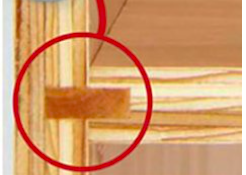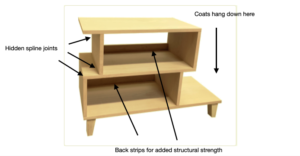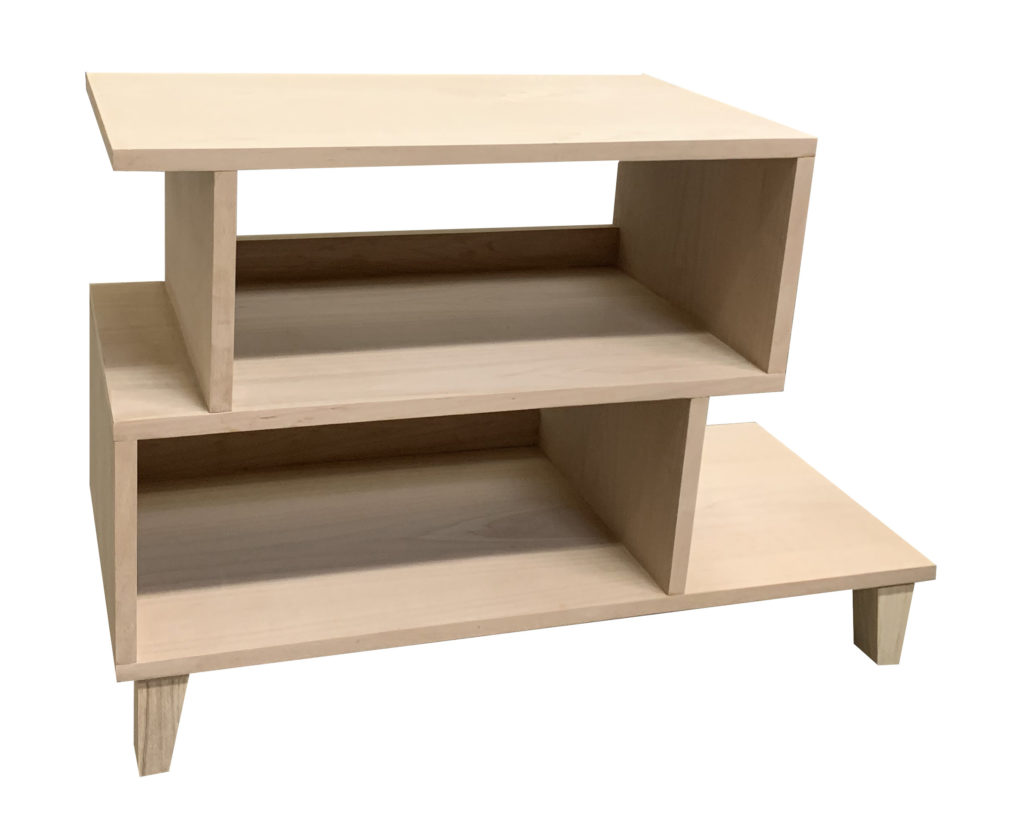My 23 year old son told me he’d love a shoe rack in his new home that doubled as a side table for his sofa. He’d been unable to find anything to buy that fit the dimensions, so I decided to build him one.
There were a few specifics that needed to be accounted for — the dimensions of the space, the color of wood that would complement his room, and the fact that they hang coats against the wall that the rack/table would abut…
He loves mid-century modern furniture — so I found and modified a style online to be able to hold 5 pairs of shoes, be the right height for the sofa table, and allow for the coats to co-exist.
I recently made a different shoe rack with mitered corners on the plywood sides — and was pretty unhappy with the results. Solid wood is so much more forgiving for the occasional minor gap in the joint — because you can sand it down to make the flaw less visible. I found plywood, however, having such a thin veneer, too easy to oversand and ended up with areas where the veneer was gone and the underlying ply exposed.
But I knew a plain butt joint wouldn’t provide enough stability. I decided instead to do two things to strengthen the joints in the plywood pieces: I created a hidden spline joint, and I added a 2″ back strip to each shelf to support the entire structure.


That left all the plywood edges exposed, which I’d planned to cover with iron-on edge veneer. In my cabinet-making days (decades ago!) I’d regularly made plywood shelves with edge veneer without problem. But in this project, this is where the headaches got the worst!
I ironed the edge veneer on each board before assembling the piece. The edge tape is 7/8″ wide, so there’s a good amount to remove till it’s the proper width for the plywood. I sanded each piece down, only to discover that I’d inadvertently sanded through the plywood veneer in places.
Additionally, once I put the pieces together, additional sanding went through parts of the edge veneer AND the plywood veneer! I cannot even count how many re-dos I did of the edge veneer — which was far more challenging now that the piece was assembled and everything had to fit exactly.
I finished the piece in oil based varathane to warm up the color a bit. In the end it came out okay. Most of the flaws were in the back, which won’t show being against the sofa. (My son was pleased, most importantly)
I’ve thought about how I’d do it differently next time. I don’t know how easily I could find a thicker veneered plywood, but I’d swear the veneer was thicker in the old days…!
I’d definitely invest in an edge veneer trimmer to lessen the sanding I was doing.
And I’ll likely lean more towards using solid wood vs plywood in future projects!

